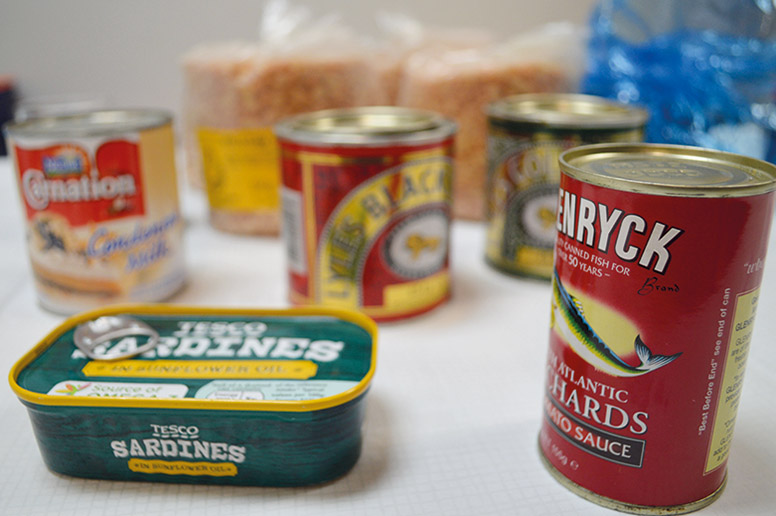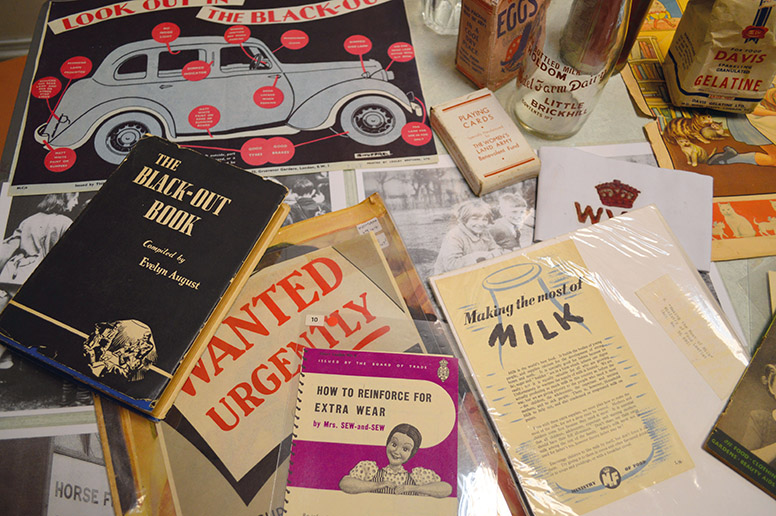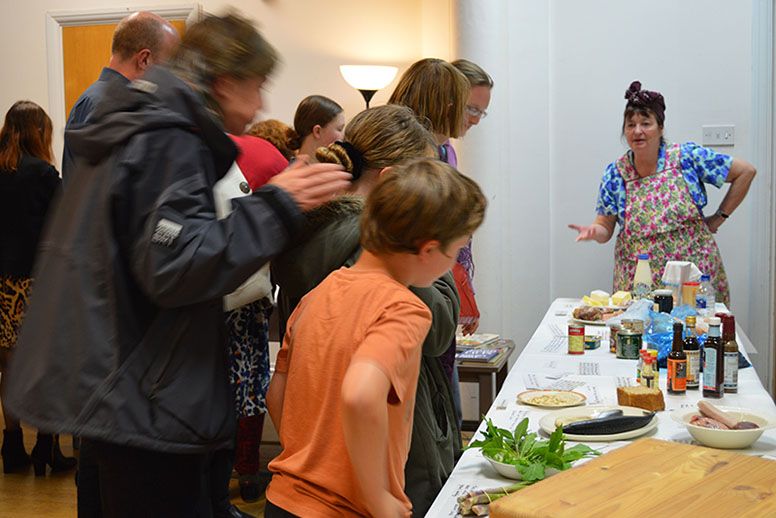What’s in a mock apricot tart? Can you make pastry with potatoes? Does nettle soup actually taste nice?
I’ve been finding out the answers to these questions and more as part of a unique challenge initiated by Cambridge Carbon Footprint (CCF). This month (June), the environmental charity challenged the public to live for a week, two weeks or a month, based on Second World War rations. As well as honouring the 70th anniversary of VE-Day and giving us a glimpse into life on the home front, their WWII Rationing Challenge aimed to enlighten our generation – used to convenience food on demand – to the health and environmental benefits of a simplified, Ministry of Food approved diet.
CCF issued all participants with ration cards, recipe suggestions and tips on avoiding food waste. Says Nicole Barton, volunteer and events organiser: “The response was overwhelming. We had over 600 people sign up, not only from Cambridge but from Wales, Cornwall, Copenhagen, Texas and New York.”
The challenge kicked off with a launch event at St Paul’s Church on 2 June where food historian Monica Askay introduced us to the fascinating world of wartime cookery. She explained: “Rationing in Britain ran from January 1940 until the summer of 1954. It was a lesson learned from the First World War, where rationing wasn’t enforced until quite late on. It prevented hoarding and ensured there was enough to go round.”
I found one recipe for chocolate truffles… made out of mashed potato
Ration books were issued to every family, to be taken weekly to their local shop. It was up to you to make it last all week. Said Monica: “I remember talking to someone who said their father would eat the family’s whole daily cheese ration after supper every night as cheese and biscuits. And the egg allocation wasn’t even one a week – so imagine if you dropped it. From 1942 onwards we got dried egg from the States,” indicating a foul-looking bottle of yellow powder. “I don’t think you can get that any more.”

With pantry staples so considerably reduced at the time, a degree of cooking creativity was required. “One cake recommended by the Ministry of Food was vinegar cake, where the raising agent was a mixture of vinegar and bicarbonate of soda. But it doesn’t raise it much. All wartime cakes were quite dry, flat and bricklike. We’re used to moist cake today. And of course it wasn’t always possible to get what you wanted. When you went to the shops with your ration card, you could only buy what they had,” she says.
Dig for victory
Because food imports were severely limited, wartime Brits were encouraged to use even the smallest bit of land to grow their own food. “Carrots, onions, broad beans and rhubarb were all popular and easy to grow,” said Monica. “Potatoes were a large part of their diet and preferable to bread. Grain had to be imported, whereas potatoes could be grown at home, in your own garden. One suggestion was, when making pastry, to pad the pastry out with grated raw potato – which gave it a greyish tinge. I’m amazed by how ingenious people became. I found one recipe for chocolate truffles… made out of mashed potato.”
Monica added: “Bread wasn’t rationed, but they came up with the National Loaf, which was made with 85{b486c5a37ab2d325d17e17d701cb2567b1ecd1814e8ceb33effa2a4f1f171d46} wholemeal, and people hated it. But it would not be wasted. Even stale bread could be used for croutons. And if you were seen putting out breadcrumbs for the birds, you’d be fined. She says: “People also did a lot more foraging. Dandelion leaves were good in salads, and nettles could be picked for nettle soup.
Flavours of the past
“Because the 1940s diet was very bland, they invented all sorts of flavourings,” Monica explains. “Anchovy essence, Bovril, Marmite and mushroom ketchup, which tastes a bit like Worcester Sauce, were all pantry staples. The particularly toxic looking one is banana, which was used to make ‘mock mashed banana’. This was basically mashed parsnips and banana flavouring. It can be quite bitter and unpleasant.”
Though mock mashed banana didn’t take my fancy, I did try mock apricot flan, as supplied on the night by FoodCycle Cambridge. It’s made from grated carrot and plum jam, and tastes rather good. I also made nettle soup at home, picking just the young leaves (with gloves!) then boiling it down like spinach in a pan of softened potatoes and onion. I was slightly nervous taking the first mouthful, imagining a throat full of nettle stings would be fairly unpleasant, but can happily report that nettle soup does not sting and tastes delicious – quite peppery.

Explaining the reason behind their Rationing Campaign, Ann Mitchell of Cambridge Carbon Footprint explains: “It’s not just about looking to the past but a really good way to start thinking about our lives now. The Second World War diet was very boring, but people were healthier than we are now. Today we eat a lot of meat and a lot of sugar and it’s causing our society problems. This challenge sees us cut down our fat, sugar, dairy and animal fats, and we might feel better for it. All those things are also bad for the environment. During the war, everything was valued and everything was used. Even if the milk went off you used it to make your cheese.”
We’ll eat again
Foraging, supporting local shops, being careful with food waste… there’s something surprisingly 21st century in all this. Though I ate far more potatoes than I’m used to, and while some things, like dried egg, have thankfully been done away with, it seems we have made a return to some of the simpler methods and mindsets practised 70 years ago. I enjoyed the creativity of wartime cooking and the rewards of knocking up a meal from foraged or home- grown produce – and my wallet felt a lot fatter for it. In summary: when in doubt, add more potatoes.
But in all seriousness, there is a war on. The enemy today isn’t ‘Jerry’ but eating too much of the wrong stuff, and the future of the whole planet is at stake. I’m not suggesting we all adopt a strict diet of fake banana mash, but by cutting back on meat, sugar and imported goods we can help lower emissions and live more sustainably – which is good news for everyone.
One adult’s weekly ration, 1940:
• 12oz/350g meat • 4oz/113g bacon or ham • 8oz/227g sugar • 4oz/113g margarine • 2oz/57g butter • 2oz/57g oil/lard • 2oz/57g cheese • 2oz/57g tea • 1lb/450g preserves • 3 pints milk • 1 egg
Find out more at: www.cambridgecarbonfootprint.org

